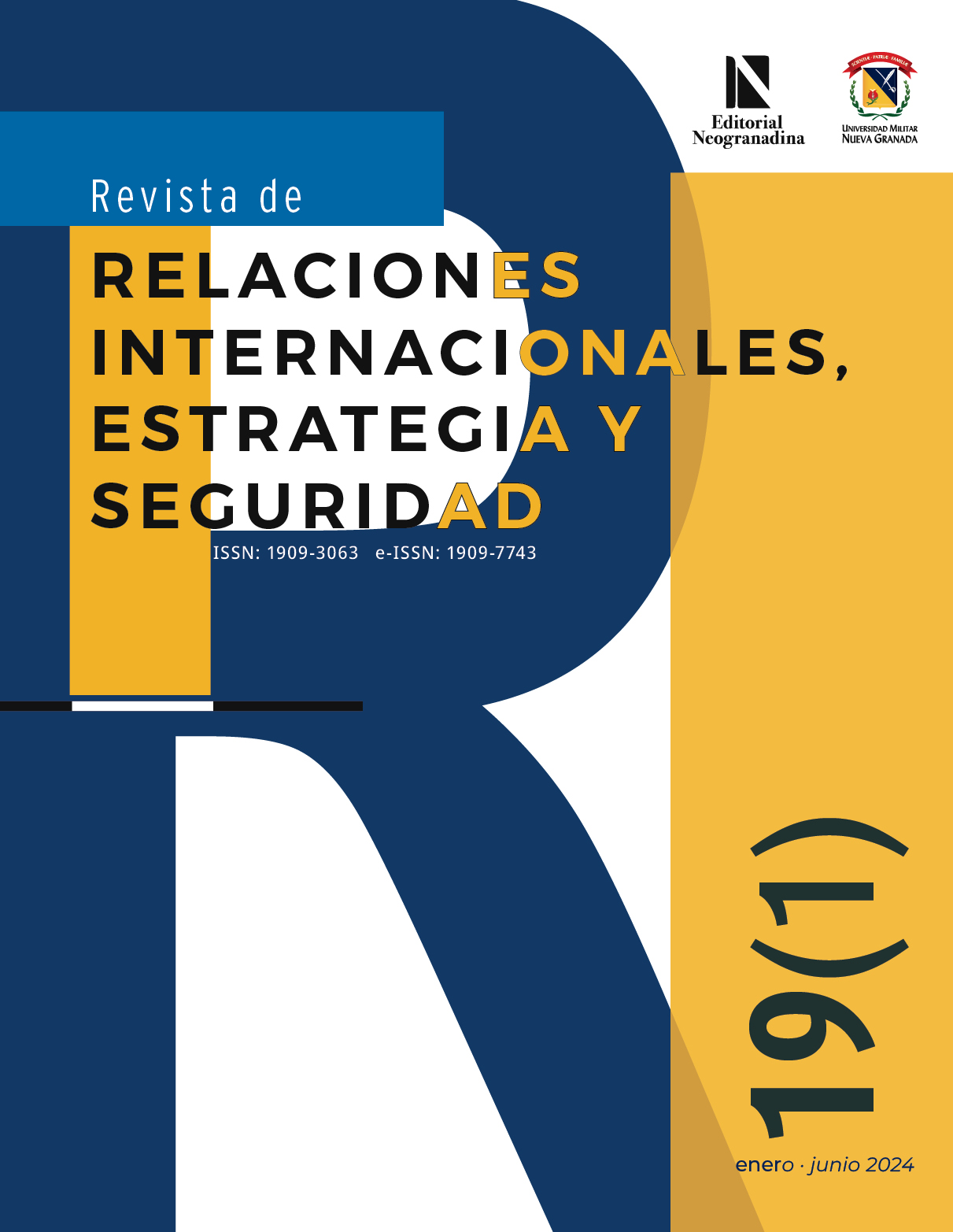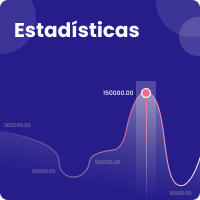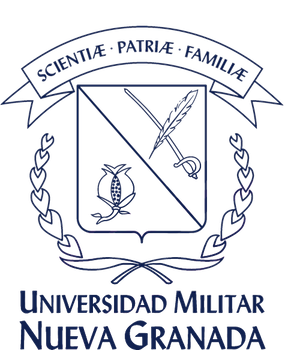Strategic Thinking and The Changing Matrix of Conflicts
Abstract
This work delves into strategic thinking and aims to reinforce three ideas already known but may have been somewhat overlooked in the contemporary era. The first idea is associated to the unique and unrepeatable nature of the conflicts. The second emphasizes that strategic responses should be distinctive, creative, disruptive, and original. The third underscores that rapid technological evolution, along with its political, economic, social and military consequences, does not seem to negate the importance of state for both civil and military decision-makers. On the contrary, it demands that state actor conceive original and context specific strategic solutions tailored to a given time and space. These strategies should not be mere replicas of those employed by other actors, even though one might argue that there is prevailing trend towards the mass and technique of conflict, which could marginalize other variables and options. War remains a “chameleon,” continually altering its character. In today’s landscape, technology combines with both state and non-state actors, diversifying the available means and expanding the domains volumetrically. Despite these changes, the moral element and will continue to exert influence on armed conflicts. A case in point is the ongoing situation in Russia and Ukraine, where individuals defending their territory demonstrate tenacity, tactical skill, and strategic genius. The methodology employed in this work is qualitative presenting a descriptive and explanatory article while adopting a prescriptive tone by recommending a renewed examination of classical authors alongside more contemporary ones.
Downloads
References
Ballesteros, M. A. (2016). En busca de una estrategia de seguridad nacional. Ministerio de Defensa. http://www.ieee.es/Galerias/fichero/OtrasPublicaciones/Nacional/2016/MABM_ESN.pdf
Bartlett, H. C., Holman, G. P. y Somes, T. E. (1995). The Art of Strategy and Force Planning. Naval War College Review, 48(2, article 9). https://digital-commons.usnwc.edu/nwc-review/vol48/iss2/9
Bartolomé, M. (2017, 30 de mayo). El empleo actual del concepto guerra en las relaciones internacionales. Revista de Relaciones Internacionales, Estrategia y Seguridad, 12(2), 43-66. http://www.scielo.org.co/pdf/ries/v12n2/v12n2a03.pdf
Beaufre, A. (1963). Introducción a la estrategia. (C. L. Roldán, Trad.). Rioplatense.
Beaufre, A. (1980). Disuasión y estrategia. (R. P. Muñoz, Trad.). Rioplatense.
Bivainis, A. (2022). Multi-dimensional assessment of the Second Nagorno-Karabakh War. W. S. University, Ed., Security and Defense Quarterly, 38(2), 51-62. https://doi.org/10.35467/sdq/146180
Bonavena, P. y Nievas, F. (2015). Guerra: modernidad y contramodernidad. caba: Final Abierto-Colección crítica.
Boone Bartholomees Jr., J., McShane, T., Troxell, J., Jablonsky, D., Cunningham, G. K., Cook, M. y Meinhart, R. (2006). U.S. Army War College Guide to National Security Policy and Strategy. 2nd Edition revised and expanded: J. Boone Bartholomees Jr., Ed. u.s. Army War College.
Calderón, P. (2009). Teoría de conflictos de Johan Galtung. Revista Paz y Conflictos (2), 60-81.
Caro, M. (2013). Peligros tecnológicos. En I. E. Estratégicos y M. d. España (Ed.), Cuaderno de Estrategia (159). Los potenciadores del riesgo. https://www.ieee.es/publicaciones-new/cuadernos-de-estrategia/2013/Cuaderno_159.html
Chamayou, G. (2016). Teoría del dron. L. Eiff, trad. caba. Futuro anterior-ned Ediciones.
Chateau-Jobert, P. (1978). Doctrina de acción contrarrevolucionaria. Rioplatense.
de Vergara, E. (2012). Estrategia, métodos y rutinas. Editorial Universitaria del Ejército (eude).
de Vergara, E. (2017). Estrategia: el camino. Editorial Universitaria del Ejército (eude).
Diplomacy, U. C. (2017). What is Soft Power? (U. C. Diplomacy, Prod.). https://softpower30.com/what-is-soft-power/
Douhet, G. (1987). El dominio del aire. (J. S. Díaz, Trad.). Instituto de Historia y Cultura Aeronáutica.
Douzet, F. (2020, 19 de mayo). Du cyberespace à la datasphère. Enjeux stratégiques de la révolution numérique.
Hérodote. Revue de géographie et de géopolitique. https://doi.org/10.3917/her.177.0003
Echevarría II, A. (2022). Clausewitz’s ‘Warlike Element’ and the War in Ukraine. En T. I. Group, Ed., Military Strategy Magazine, 8(2). https://www.militarystrategymagazine.com/article/clausewitzs-warlike-element-and-the-war-in-ukraine/
Economist a., T. (2023, 3 de julio). Western armies are learning a lot from the war in Ukraine. (Internet). https://www.economist.com/special-report/2023/07/03/western-armies-are-learning-a-lot-from-the-war-in-ukraineutm_medium=cpc.adword.pd&utm_source=google&ppccampaignID=19495686130&ppcadID=&utm_campaign=a.22brand_pax&utm_content=conversion.direct-response.
Economist b., T. (2023, 3 de julio). The war in Ukraine shows how technology is changing the battlefield.
European Centre of Excellence for Countering Hybrid Threats. (s. f.). Centro Europeo de Excelencia para Contrarrestar las Amenazas Híbridas. https://www.hybridcoe.fi/European Council of Foreign Relations. (2022, 15 de marzo). Why Ukraine needs greater military support from the West. E. C. Relations, Ed. (Internet). https://ecfr.eu/article/why-ukraine-needs-greater-military-support-from-the-west/
Fernández, J. (1993). Las guerras de la política. Clausewitz de Maquiavelo a Perón. Edhasa.
Figueroa, A. y Taján, G. (2018, diciembre). La guerra: sustancia y accidente. ¿Las categorías son útiles? En A. Argentina, Ed., Revista de la Escuela de Guerra Naval (64), 93-112.
Finney, N. (2020). On Strategy: A Primer. Fort Leavenworth. Combat Studies Institute Press U.S. Army.
Fojón, E. (2018, 9 de marzo). La cuarta revolución industrial, el “algoritmo de guerra” y su posible aplicación a la defensa española. R. I. Elcano, Ed. (Internet). https://media.realinstitutoelcano.org/wp-content/uploads/2021/11/ari35-2018-fojon-4-revolucion-in-dustrial-algoritmo-guerra-posible-aplicacion-defensa-espana.pdf
Frischknecht, F., Lanzarini, M., Alonso, R., Moya, E. y Hernández, F. (1995). Lógica, teoría y práctica de la estrategia. Escuela de Guerra Naval. Armada Argentina.
Girardi, E. (2023, mayo). Complejo Digital y Defensa Nacional. Doctorado en Defensa. caba.
Gray, C. (1999). Why Strategy is so Difficult. Joint Forces Quaterly, Summer, 6-12. https://ndupress.ndu.edu/portals/68/Documents/jfq/jfq-22.pdf
Grinsberg, A. (2023, 13 de febrero). Glass cannons from Grozny to Mariupol: What should the US military learn from Russia´s use of artillery in protracted urban sieges? (Internet). https://mwi.westpoint.edu/glass-cannons-from-grozny-to-mariupol-whatshould-the-us-military-learn-from-russias-use-of-artillery-in-protracted-urban-sieges/
Iasiello, E. (2017). Russia’s Improved Information Operations: From Georgia to Crimea. U. A. College, ed., The US Army War College Quarterly: Parameters, 47(2). https://doi.org/10.55540/0031-1723.2931
Instituto Español de Estudios Estratégicos - Ministerio de Defensa de España. (2019, diciembre). Límites jurídicos de las operaciones: nuevos desafíos. Técnica, Ed., Cuadernos de Estrategia, 201. https://www.ieee.es/Galerias/fichero/cuadernos/CE_201.pdf
Instituto Español de Estudios Estratégicos. (2013, febrero). Los potenciadores del riesgo. Ministerio de Defensa,
Ed., Cuaderno de Estrategia, 159. https://publicaciones.defensa.gob.es/los-potenciadores-del-riesgo.html
Johansen, B. y Euchner, J. (2013). Navigating the vuca World. R.-T. Management, Ed., Research-Technology Management, 56(1), 10-15. https://doi.org/10.5437/08956308X5601003
Johnson, D. (2019, 2 de noviembre). Review of Speech by General Gerasimov at the Russian Academy of Military
Science. (Internet). https://www.ndc.nato.int/research/research.php?icode=585
Katzenstein, P. (1996). The Culture of National Security: Norms and Identity in World Politics. Columbia University Press.
Keohane, R. y Nye, J. (1988). Poder e interdependencia. La política mundial en transición. Grupo Editor Latinoamericano.
Kissinger, H. (2018, junio). How the Enlightenment Ends. A. Media, Ed. The Atlantic.
Korybko, A. (2015). Guerras híbridas. De las revoluciones de colores a los golpes. Expresión Popular.
Lantis, J. (2009). Strategic Culture: From Clausewitz to Constructivism. En J. Johnson, K. M. Kartchner y J. A. Larsen, Strategic Culture and Weapons of Mass Destruction. Palgrave - Macmillan. https://doi.org/10.1057/9780230618305_3
Liang, Q. y Xiangsui, W. (2021). Guerra sin restricciones. A. Urricariet, Ed. caba. Círculo Militar.
Liddell, B. (2019). Estrategia. El estudio clásico sobre la estrategia militar. R. Romero, Trad. Arzalia.
Lobell, S., Ripsman, N. y Taliaferro, J. (2009). Neoclassical Realist Theory of International Politics. Cambridge University Press.
Machi, V. (2023). NATO preps tech competition to solve real-world security issues. (Internet). https://www.defensenews.com/global/europe/2023/03/24/nato-preps-tech-competition-to-solve-real-world-security-issues/?utm_ source=sail-thru&utm_medium=email&utm_campaign=dfn-dnr
Mallick, P. K. (2019, 18 de enero). Is artificial intelligence changing the nature of war? (Internet). https://www.vifindia.org/article/2019/january/18/is-artificial-intelligence-changing-the-nature-of-war
Mao Tse-Tung. (1968). Sobre la guerra prolongada. Tomo II. Ediciones en Lenguas Extranjeras.
Mc Fate, S. (2020). Las nuevas reglas de la guerra. C. Militar, Ed. caba. Biblioteca del Oficial.
Ministry of Defense - Development, Concepts and Doctrine Centre (dcdc). (2015, agosto). Strategic Trends Programmed - Future Character of Conflict.
Ministerio de Defensa del Reino Unido, Ed. (Internet). https://assets.publishing.service.gov.uk/government/uploads/system/uploads/attachment_data/file/486301/20151210-Archived_DCDC_FCOC.pdf
Moresi, A. (2021). Una visión sobre el conflicto presente y futuro. caba.
Nickels, B. (2009). Mary Kaldor. New & Old Wars: Organized Violence in a Globalized Era. En J. O. Studies, Ed., Journal of Military and Strategic Studies, 12(1).
Nievas, F. H. (2021, junio). Hacia una nueva geopolítica. La cuarta revolución espacial. N. D. Germani, Ed., Cuadernos de Marte (20), 395-429.
ONU sg. (1995). Suplemento de un programa de paz: documento de posición del sg presentado con ocasión del cincuentenario de las Naciones Unidas-A/50/60*S/1995/1*. Naciones Unidas. (Internet). https://digitallibrary.un.org/record/168325
Schmitt, C. (1984). El concepto de lo político. Folios.
Schmitt, C. (1985). Teoría del partisano: acotación al concepto de lo político. Folios Ediciones.
Serrano, M. (2019). El liderazgo militar en los tiempos de la Inteligencia Artificial. E. S. Conjunta, Ed., Visión Conjunta, año 11(20).
Smith, R. (2007). The Utility of Force. Alfred Knoff.
Snegovaya, M. (2015). Putin´s information warfare in Ukraine. Institute of the Study of War, Report 1. (Internet). https://www.understandingwar.org/sites/default/files/Russian%20Report%201%20Putin’s%20Information%20Warfare%20in%20Ukraine-%20Soviet%20Origins%20of%20Russias%20Hybrid%20Warfare.pdf
Spencer, J. (2023, 31 de marzo). Modern Institute if War. W. Point, Ed. (Internet). https://mwi.westpoint.edu/what-does-it-take-to-rebuild-a-city-destroyed-by-war/
van Creveld, M. (1991). La transformación de la guerra. J. L. Uceda, Ed. Vargas, E. (ed.). (1997). O pensamento dos militares
em política internacional (1961-1989). Revista Brasileira de Política Internacional, 1(4). https://www.scielo.br/j/rbpi/a/j4bXgSLG4dXCV4SMfK3qQfp/?format=pdf&lang=pt
Vertulli, M. y Loudon, B. (s.f.). Percepciones soin realidad. Biblioteca Círculo Militar, Ed. Dunken.
von Clausewitz, C. (1992). De la guerra (Libro I, capítulo I). Editorial Círculo Militar.
von Clausewitz, C. (2021). De la guerra. Obelisco.
von Ludendorf, E. (1964). La guerra total. J. I. Briceles, Trad. Pleamar.
Waltz, K. (1959). El hombre, el Estado y la guerra. Editorial Nova.
Wiltenburg, I. (2020). The importance of understanding Russian strategic culture. Atlantisch Perspectief, 44(1). https://www.jstor.org/stable/48600538
Work, B. (2015, 8 de abril). U.S. Department of Defense Army War College. First Principles for 21st Century Defense. U.S. Army War College. (Internet). https://www.defense.gov/News/Speeches/Speech/Article/606661/army-war-college-strategy-conference/
World Economic Forum. (2018). The Fourth Industrial Revolution. (Internet). https://www.weforum.org/about/the-fourth-industrial-revolution-by-klaus-schwab

Copyright (c) 2024 Revista de Relaciones Internacionales, Estrategia y Seguridad

This work is licensed under a Creative Commons Attribution-NonCommercial-NoDerivatives 4.0 International License.











